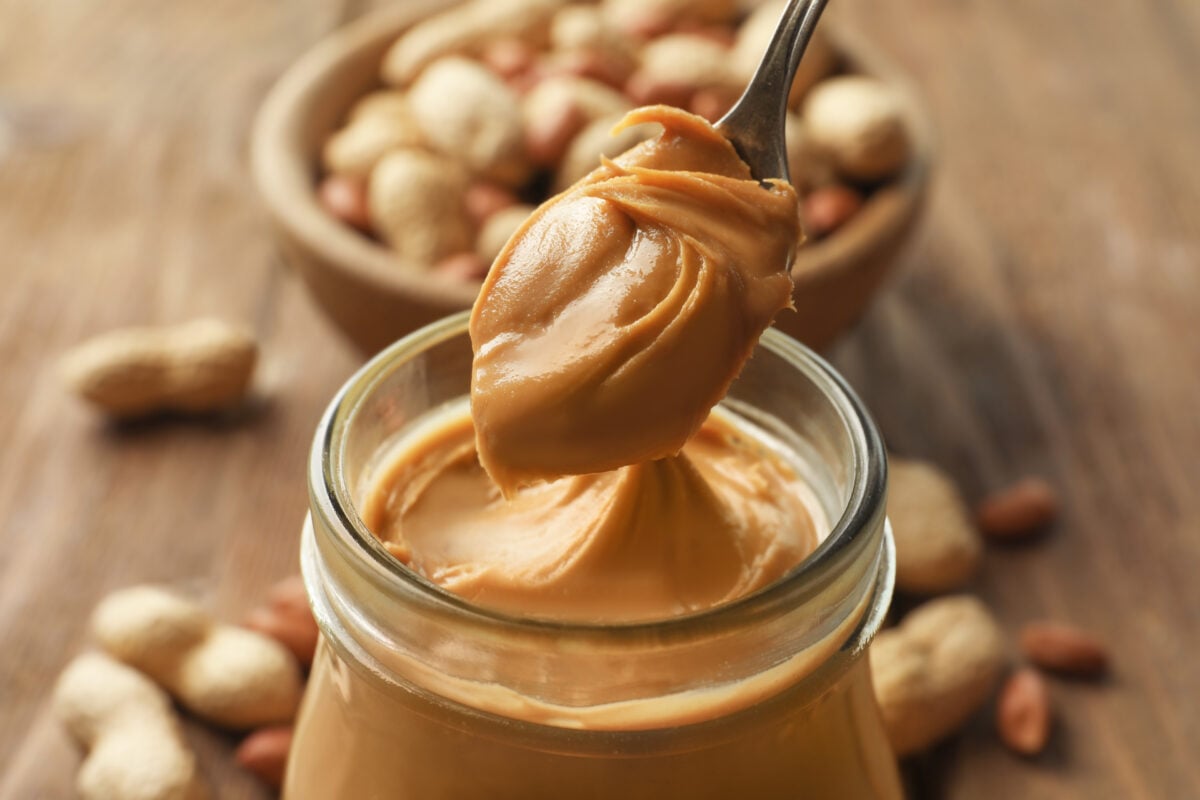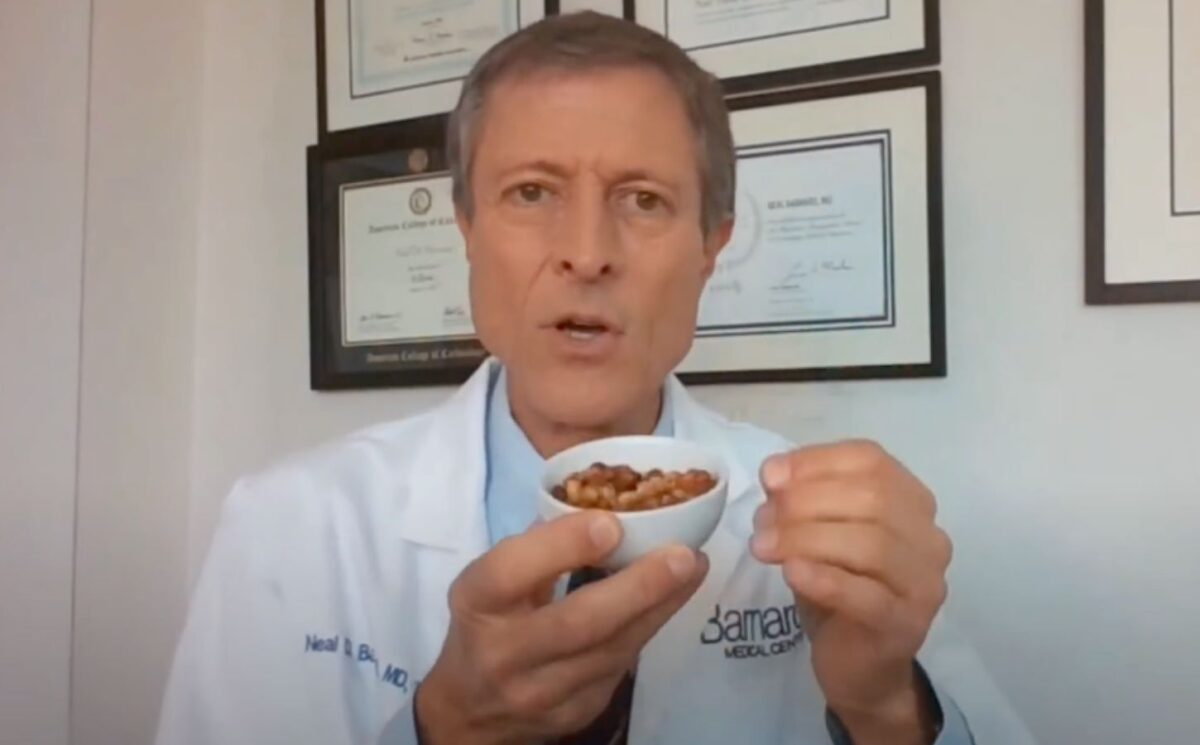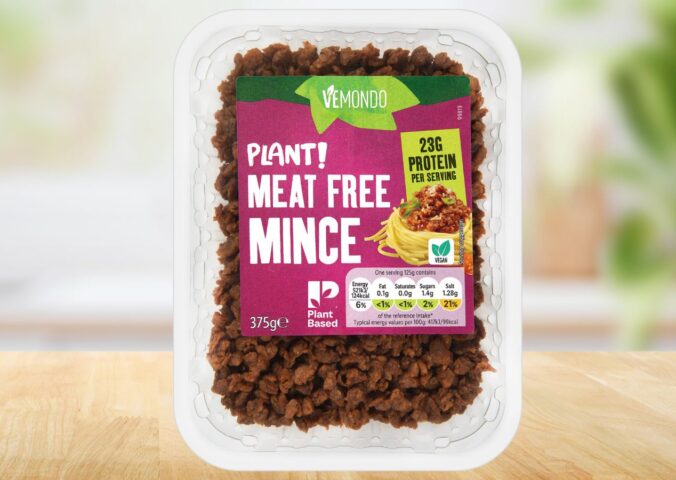Menopause can feel like a storm that upends daily life – disrupting sleep, triggering hot flashes, and affecting mood. But what if relief could be found in something as simple as what’s on your plate?
The Physicians Committee for Responsible Medicine, which promotes disease prevention through nutrition, recently shared a YouTube video explaining how three simple dietary changes can significantly reduce menopause symptoms. Led by Dr Neal Barnard, president of the nonprofit and author of Your Body in Balance, the guidance comes from the groundbreaking WAVS study (Women’s Study for the Alleviation of Vasomotor Symptoms). The research found that a plant-based diet, combined with low fat intake and whole soybeans, reduced moderate to severe hot flashes by 84 percent.
One viewer summed up the impact: “I am vegan, 51, and I do not know what the symptoms are. I do not have any symptoms except feeling great. Thank you, plants.”
Here’s how Dr. Barnard suggests to get started.
Please note: this article is intended as a guide only. You should always consult your doctor if you have questions about menopause
Read more: Consuming Certain Plant-Based Foods Could Slow Down Biological Aging, Says Study
1. Go vegan
The first and most critical step is adopting a fully plant-based diet. “Fruits, grains, vegetables, legumes…that’s going to be what we’re going to be eating from,” Barnard explains.
Barnard acknowledges that this can feel daunting at first, especially for women new to plant-based eating. That’s why he recommends starting with a “test week.” During this phase, you don’t need to commit yet – just explore. Write down what you might eat for breakfast, lunch, and dinner if you were eating only plant-based foods. Use resources like Barnard’s book, recipe websites, or plant-based cookbooks.
Popular options include tofu scrambles instead of eggs, oatmeal with fruit, egg-free pancakes, marinara pasta in place of meat sauces, veggie sushi rolls, and plant-based burgers. International cuisines, like Latin American bean dishes, Asian stir-fries, or Middle Eastern mezze, offer a wealth of vegan-friendly options.
Equally important: take vitamin B12. “You need to take vitamin B12 along with [a vegan diet] for healthy blood and healthy nerves,” Barnard says.
2. Limit oils

The second step is reducing added oils, even those marketed as healthy. “Let’s keep the oils out of it,” Barnard advises, at least for the initial three weeks. This includes avoiding common high-fat ingredients like olive oil, coconut oil, nuts, seeds, and avocados – just temporarily, to give the body a break and allow hormone balance to stabilize.
Barnard provides a helpful rule of thumb: check food labels and only buy products with less than three grams of total fat per serving. “If it’s more than that, that’s fattier than we’re going to want,” he says.
For example, two tablespoons of peanut butter contain around 16 grams of fat, while half a cup of black beans has just 0.5 grams. In this case, “the beans are my winner here,” he adds.
He also suggests sticking to whole or minimally processed foods. Produce items like oranges, broccoli, and leafy greens have no nutrition labels – and no added fat. Processed vegan foods, however, often include oils, so label reading is crucial.
Why the oil-free approach? Hormonal fluctuations during menopause can be aggravated by high-fat foods. Low-fat diets have been shown to improve vasomotor symptoms such as hot flashes.
3. Add whole soybeans
Perhaps the most surprising recommendation? Eat more soy – but not in the way most people think.
While edamame is a great snack, Barnard points out that mature soybeans have the highest levels of isoflavones – plant estrogens that support hormonal balance. “Edamame has a little bit, but the actual mature soybeans have a lot,” he explains.
The simplest way to prepare them is in an Instant Pot or pressure cooker. “Cover them with about two inches of water…cook them for 40 minutes,” Barnard says. No need to soak. If using a stovetop, soak overnight, then boil for one to one and a half hours until soft. Cooked soybeans can be stored in Tupperware or freezer bags and eaten throughout the week.
A daily half-cup is the target. Toss them on salads, stir them into soups, or enjoy them roasted. To roast, spread cooked soybeans on a parchment-lined tray and bake at 350°F for 45 to 60 minutes. “They are very tasty,” Barnard says. Season them however you like – salt, garlic powder, nutritional yeast, cayenne, or herbs. Just skip the oil.
While soy milk and tofu also contain isoflavones, the amounts needed are higher: about two quarts of soy milk or eight ounces of tofu to match the potency of half a cup of whole soybeans.
Why it’s worth trying
The WAVS study’s results are compelling. Participants experienced an 84 percent reduction in moderate to severe hot flashes. Many reported sleeping better, improved mood, and even weight loss – all within just a few weeks.
And the benefits don’t stop with menopause. This way of eating can also support heart health, reduce the risk of breast cancer, and lower the chance of cognitive decline. “The same kind of diet changes help all of these conditions,” Barnard explains.
He encourages women to explore the diet, even if they’re skeptical. “You don’t have to believe in the diet. You just have to do it and see what happens,” he says.
Plus, it’s not nearly as restrictive as many assume. “A plant-based diet opens up the world to you of so many different ways of eating,” Barnard says. From global cuisines to plant-based versions of comfort foods, the possibilities are both exciting and delicious.
As Barnard puts it, this is a short-term test with potentially long-term results. If hot flashes, night sweats, or mood swings are interfering with life, a few small changes in your diet might make a big difference.
“You have nothing to lose. You have everything to gain,” he says.
You can find more plant-based health videos on the Physicians Committee YouTube channel.
Read more: Half Of US Adults Believe Plant-Based Diets Can Improve Health, Survey Finds






